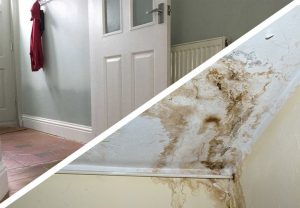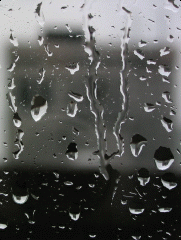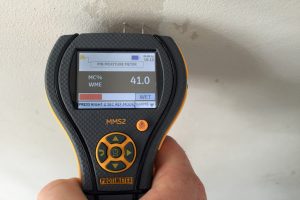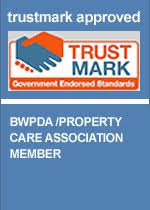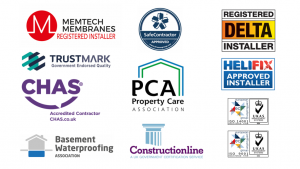Dampness within properties is one of the most important maintenance problems that affect buildings and there are 3 main causes: condensation, rising damp, and penetrating damp. As well as the damp smell, mould growth and deterioration of wall plaster and decorations, dampness can actually cause serious damage to the structure of the property.

Rising damp is caused by an absence or breakdown of the damp proof course to the base of the walls. It usually introduces groundwater salts into the wall structure with consequent damage. The most effective remedy is the introduction of a new chemical damp proof course together with local specialist re-plastering.
Penetrating damp is usually caused by rainwater entering the wall structure due to external defects. There are many different reasons and ways that dampness can penetrate the structure of buildings, including plumbing or drainage leaks and these MUST be fixed urgently. Delays can allow extensive damage to the property including the growth of fungal decay (dry rot and wet rot) to structural and joinery timbers.
Condensation is the main cause of dampness in the UK and is due to excessive humidity within the property. Moisture in the air will form condensation (droplets of liquid water) when it comes into contact with a cold surface such as a window. We all get condensation on our windows from time to time, but this isn’t necessarily a problem if it clears up quickly.
Problems start if the water builds up to the point where it starts to cause damage. And if it’s building up somewhere other than on the window, you may not notice until the wallpaper starts to peel, or black mould starts to grow. This is most likely to happen in places that are colder than the rest of the house, such as exposed corners or where there is a gap in the insulation, and where the air can’t circulate freely, such as behind furniture.
If you do have mould growing, it’s good to clean it off straight away to minimise any health risk, but you also need to fix the underlying damp problem to stop it coming back. If you don’t have any leaks or rising damp issues, then the problem is almost certainly condensation. There are several things you can do to help avoid problems in the future:
- reduce the amount of moisture produced in the first place by keeping lids on pans when cooking, drying clothes outside when possible, and if you use a tumble dryer, making sure it’s vented to the outside
- ventilate so the moist air leaves the house – always use the extractor fan when you’re cooking, showering or bathing, leave any window vents open, and don’t block off any other vents
- make sure air can circulate by leaving gaps between furniture and the wall
- try to avoid cold spots – if there’s a gap between your wall insulation and your loft insulation, for example, try to get this fixed as it will attract condensation and possibly mould
- consider adding more ventilation – this could be a new external vent in a problem corner, a new extractor fan, or even a whole house ventilation system if you need it
- don’t fit any new draught-proofing in a room that already has a condensation problem, and if you’re getting a professional to fit insulation, draught-proofing or new windows or doors, ask them what they have done to check that ventilation will still be adequate
Rochester Building and Damp offer first-class surveying and remedial services covering all forms of damp proofing. Our specialist and experienced operatives ensure that you will have the correct solution and a long-lasting, positive outcome.




